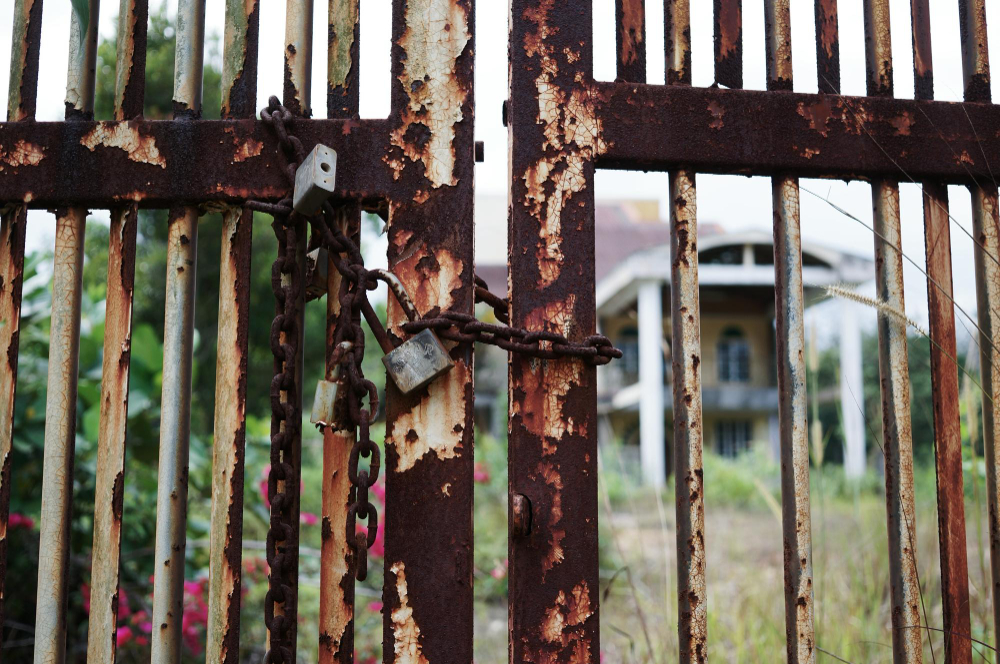Top Causes of Fence Rot and How to Prevent Them

Fences serve as a crucial component of your home's exterior, offering privacy, security, and enhancing curb appeal. However, one common issue that can compromise the integrity of your fence is rot. Understanding the causes of fence rot and knowing how to prevent it can save Orlando homeowners time, money, and effort. If you're in need of professional assistance, consider reaching out to Wulff Fence, one of the leading fence companies in Orlando.
What is Fence Rot?
Fence rot occurs when wood, the most common fencing material, starts to decay due to prolonged exposure to moisture and other environmental factors. This decay weakens the structure, making it vulnerable to damage and reducing its lifespan.
Top Causes of Fence Rot
1. Moisture Retention
One of the primary causes of fence rot is moisture retention. Wood is highly susceptible to absorbing water, which creates the perfect environment for fungi to thrive.
How Moisture Affects Wood
- Absorption: Wood absorbs water from rainfall, sprinklers, or even morning dew.
- Fungal Growth: Moist conditions encourage fungal growth, which breaks down the wood's cellular structure.
- Softening: Over time, the wood softens and loses its structural integrity, making it prone to breaking.
2. Inadequate Drainage
Poor drainage around the fence base is another significant factor contributing to fence rot.
How Inadequate Drainage Leads to Rot
- Puddling: Water accumulates around the fence posts, keeping them continuously damp.
- Ground Saturation: Excessive moisture in the soil can seep into the wooden posts, accelerating decay.
3. Insect Infestation
Certain insects, such as termites and carpenter ants, can exacerbate fence rot by burrowing into the wood and further weakening its structure.
Common Pests to Watch Out For
- Termites: These insects feed on wood, creating tunnels and compromising the fence's integrity.
- Carpenter Ants: Unlike termites, carpenter ants do not eat wood but create nests inside it, which can still cause significant damage.
4. Poor Quality Materials
Using substandard or untreated wood can increase the likelihood of rot. High-quality, treated wood is more resistant to moisture and insect damage.
Why Material Quality Matters
- Durability: Treated wood is designed to withstand environmental stressors.
- Longevity: High-quality materials extend the life of your fence, providing better value for money.
5. Lack of Maintenance
Neglecting regular maintenance can lead to small issues becoming major problems, including rot.
Essential Maintenance Tips
- Regular Inspections: Check for signs of rot, such as discoloration, softness, or fungal growth.
- Seal and Stain: Applying a sealant or stain can protect the wood from moisture and UV damage.
- Cleaning: Remove debris and dirt that can trap moisture against the wood.
How to Prevent Fence Rot
1. Choose the Right Materials
Opt for high-quality, pressure-treated wood that is designed to resist rot and insect damage.
Recommended Materials
- Cedar: Naturally resistant to rot and insects.
- Redwood: Durable and resistant to decay.
- Pressure-Treated Pine: Treated with chemicals to resist rot and pests.
2. Ensure Proper Installation
Proper installation techniques can significantly reduce the risk of rot.
Installation Best Practices
- Elevate the Fence: Keep the fence panels off the ground to prevent direct contact with moisture.
- Concrete Footings: Use concrete to secure fence posts and improve drainage.
- Angle Cuts: Cut the tops of posts at an angle to allow water runoff.
3. Implement Regular Maintenance
Routine maintenance is key to preventing rot and extending the life of your fence.
Maintenance Checklist
- Inspect Regularly: Check for early signs of rot and address them immediately.
- Clean Annually: Remove any debris, leaves, and dirt that can trap moisture.
- Reapply Sealant: Reapply a protective sealant or stain every few years to maintain the wood's protective barrier.
4. Improve Drainage
Enhancing drainage around your fence can help keep the wood dry.
Drainage Solutions
- Gravel Beds: Surround the base of the fence posts with gravel to facilitate water drainage.
- Slope Ground Away: Ensure the ground slopes away from the fence to prevent water accumulation.
- Install French Drains: Consider installing French drains to direct water away from the fence area.
5. Protect from Insects
Taking measures to protect your fence from insect damage can mitigate one of the main causes of rot.
Insect Prevention Tips
- Use Treated Wood: Opt for pressure-treated wood that is less attractive to insects.
- Regular Inspections: Look for signs of insect infestation and treat promptly.
- Apply Insecticides: Use appropriate insecticides to keep pests at bay.
Conclusion
By understanding the top causes of fence rot and taking proactive steps to prevent it, you can ensure that your fence remains sturdy and attractive for years to come. Regular maintenance, quality materials, and proper installation are critical components in this process.
If you're looking for professional assistance, reach out to Wulff Fence, one of the leading fence companies in Orlando, FL. Our team of experts is here to help you with all your fencing needs. Contact us today to request an estimate and protect your investment.
Call to Action
Ready to upgrade your fence and prevent future rot? Contact Wulff Fence today to request an estimate and learn more about our services. Your ideal fence is just a call away!
By following this guide, you can effectively address the common causes of fence rot and take the necessary steps to prevent it. With a little effort, you can enjoy a beautiful and durable fence that adds value to your property. For more expert advice and top-notch service, consider Wulff Fence as your go-to fence company in Orlando.
